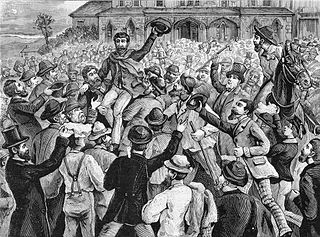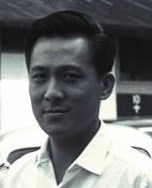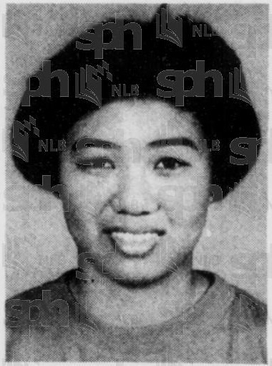Related Research Articles
In jurisprudence, double jeopardy is a procedural defence that prevents an accused person from being tried again on the same charges following an acquittal or conviction and in rare cases prosecutorial and/or judge misconduct in the same jurisdiction. Double jeopardy is a common concept in criminal law - in civil law, a similar concept is that of res judicata. The double jeopardy protection in criminal prosecutions only bars an identical prosecution for the same offence, however, a different offence may be charged on identical evidence at a second trial. Res judicata protection is stronger - it precludes any causes of action or claims that arise from a previously litigated subject matter.

In common law jurisdictions, an acquittal means that the prosecution has failed to prove that the accused is guilty beyond a reasonable doubt of the charge presented. It certifies that the accused is free from the charge of an offense, as far as criminal law is concerned. The finality of an acquittal is dependent on the jurisdiction. In some countries, such as the United States, an acquittal prohibits the retrial of the accused for the same offense, even if new evidence surfaces that further implicates the accused. The effect of an acquittal on criminal proceedings is the same whether it results from a jury verdict or results from the operation of some other rule that discharges the accused. In other countries, like Australia and the UK, the prosecuting authority may appeal an acquittal similar to how a defendant may appeal a conviction — but usually only if new and compelling evidence comes to light or the accused has interfered with or intimidated a juror or witness.
Circumstantial evidence is evidence that relies on an inference to connect it to a conclusion of fact—such as a fingerprint at the scene of a crime. By contrast, direct evidence supports the truth of an assertion directly—i.e., without need for any additional evidence or inference.
Barry Michael George is an English man who was found guilty of the murder of English television presenter Jill Dando and whose conviction was overturned on appeal.
David Harold Eastman is a former public servant from Canberra, Australia. In 1995, he was wrongfully convicted of the murder of Australian Federal Police Assistant Commissioner Colin Winchester and was sentenced to life imprisonment without parole. A 2014 judicial inquiry recommended the sentence be quashed and he should be pardoned. On 22 August of the same year, the Supreme Court of the Australian Capital Territory quashed the conviction, released Eastman from prison, and ordered a retrial.
The Lady in the Lake trial was a 2005 murder case in which Gordon Park a retired teacher from Leece, near Barrow-in-Furness, Cumbria, England, was jailed for life for the 1976 murder of his first wife, Carol Ann Park.
The murder of 12-year-old Stephanie Crowe took place in her bedroom inside her home at Escondido, California, sometime between late night January 20, 1998, to early morning January 21, 1998. Stephanie's parents and grandmother found her body on the floor of her bedroom on the morning of January 21, 1998. She had been stabbed eight times. There was no sign of forced entry. Stephanie's window was found unlocked, but a screen was in place and there was no disturbance of accumulated grime and insect traces. A sliding glass door in her parents' bedroom was also unlocked. No knives were found at the scene that seemed consistent with the murder weapon, and no bloody clothing was found despite an exhaustive search.
It is possible to convict someone of murder without the purported victim's body in evidence. However, cases of this type have historically been hard to prove, often forcing the prosecution to rely on circumstantial evidence, and in England there was for centuries a mistaken view that in the absence of a body a killer could not be tried for murder. Developments in forensic science in recent decades have made it more likely that a murder conviction can be obtained even if a body has not been found.
The Double Jeopardy Clause of the Fifth Amendment to the United States Constitution provides: "[N]or shall any person be subject for the same offence to be twice put in jeopardy of life or limb..." The four essential protections included are prohibitions against, for the same offense:
The Nancy Kissel murder case was a highly publicised criminal trial held in the High Court of Hong Kong, where American expatriate Nancy Ann Kissel was convicted of the murder of her husband, 40-year-old investment banker Robert Peter Kissel, in their apartment on 2 November 2003. It was arguably the highest profile criminal case involving an expatriate in Hong Kong's history, and was closely covered in the media.
Rolando Cruz is an American man known for having been wrongfully convicted and sentenced to death, along with co-defendant Alejandro Hernandez, for the 1983 kidnapping, rape, and murder of 10-year-old Jeanine Nicarico in DuPage County, Illinois. The police had no substantive physical evidence linking the two men to the crime. Their first trial was jointly in 1987, and their statements were used against each other and a third defendant.
The Lin family murders occurred in North Epping in the northwestern suburbs of Sydney, New South Wales, Australia, on 18 July 2009. The victims were newsagency proprietor Min Lin; his wife, Yun Lin; their sons, Henry and Terry; and Yun Lin's sister, Irene Lin. The family was bludgeoned to death. Min Lin's sister, Kathy, discovered the bodies. Jun "Brenda" Lin, 15, was the only surviving immediate family member after the incident; she was on a school trip in New Caledonia with Cheltenham Girls High School at the time.
Christine Marie Lundy, 38, and her 7-year-old daughter Amber Grace Lundy were murdered in Palmerston North, New Zealand, on 29 or 30 August 2000. In February 2001, after a six month investigation, Christine's husband and Amber's father, Mark Edward Lundy, was arrested and charged, and in 2002, he was convicted of the murders and sentenced to life imprisonment with a minimum non-parole period of 17 years.
This is a list of notable overturned convictions in Canada.
Adrian P. Thomas was a father of seven children living in Troy, New York, when, in September 2008, his four-month-old son died. A preliminary medical examination indicated that the infant died from head trauma. The police interrogated Thomas for nearly 10 hours during which he confessed to throwing his son on the bed three times. The entire interrogation was videotaped. He was charged with second-degree murder, found guilty, and sentenced to 25 years to life in prison.

Investigating Innocence is a nonprofit wrongful conviction advocacy organization that provides criminal defense investigations for inmates in the United States. Investigating Innocence was founded in 2013 by private investigator Bill Clutter to assist nationwide Innocence Project groups in investigating innocence claims. "Once we have a case that meets our criteria, we'll put private investigators to work on it. A lot of these cases need investigators," said Kelly Thompson, executive director of Investigating Innocence. Prior to his work on Investigating Innocence, Clutter was one of the founders of the Illinois Innocence Project. Investigating Innocence also has a board composed of exonerees that reviews incoming cases.

On the morning of February 3, 2003, American actress Lana Clarkson was found dead inside the Pyrenees Castle, the Alhambra, California, mansion of record producer Phil Spector. In the early hours of that morning, Clarkson had met Spector while working at the House of Blues in Los Angeles.
The Eastburn family murders were the murders of Kathryn "Katie" Eastburn and her daughters, Kara and Erin, which occurred in Fayetteville, North Carolina, in May 1985. In 1986, United States Army Sergeant Timothy Hennis was tried and convicted for the three murders. In 1988, Hennis's conviction was overturned on appeal, and he was acquitted the following year. In 2006, the Cumberland County Sherriff's Office obtained DNA evidence linking Hennis to the crime. Despite the Fifth Amendment's Double Jeopardy Clause prohibiting retrials after acquittals, the United States Army was able to initiate prosecution and trial proceedings against Hennis under the dual sovereignty doctrine. In 2010, Hennis was tried and convicted by an Army court-martial for the triple murders and sentenced to death.

Sunny Ang Soo Suan, alias Anthony Ang, was a Singaporean racing driver and part-time law student who gained notoriety for the murder of his girlfriend Jenny Cheok Cheng Kid near Sisters' Islands. Ang was charged and tried for murder in the High Court of Singapore solely based on circumstantial evidence and without a body, and his case attracted substantial attention in Singapore and Malaysia given that he was the first to be tried for murder without a body in these two countries.

Liang Shan Shan was a 17-year-old Malaysian schoolgirl who was reported missing in Singapore on 2 October 1989. Liang was found dead nearly two weeks later at Yishun Industrial Park, where her highly decomposed body was discovered by a group of National Servicemen who were training nearby that area. Despite conducting a post-mortem examination, the cause of Liang's death was uncertain due to the high state of decomposition and disappearance of certain body parts. Police investigations revealed that prior to her disappearance and murder, Liang was last seen boarding her school bus and left the school at 1pm on 2 October 1989, the same day she went missing.
References
- ↑ Cult Help and Information - Roots of Hendricks' religion traced
- ↑ David Hendricks Spent 7 Years In Prison For Slaughtering His Whole Family — & Then Was Cleared, Mike McPadden, Investigation Discovery, April 2018.
- ↑ Decades-old murder mystery back before public, Jim Dey, Champaign News-Gazette, April 5, 2018.